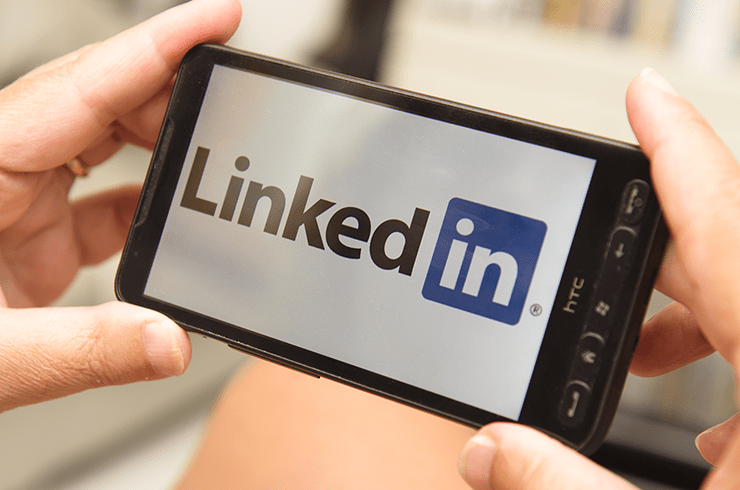A few months ago we gave you an overview of LinkedIn, where we briefly talked about creating company pages. Let’s delve a bit deeper into the best ways to use this feature.
One of the main purposes of LinkedIn (the largest social media platform for professionals and businesses) is networking—connecting with others in your industry and making them aware of your company and brand. This requires action on your part and interaction with not only followers and connections but with your network, and the best way to do this is to create a company page. But first you’ll need a personal profile.
Creating Your Personal Profile Review
Remember, your profile is like an online business card or résumé that showcases your experience, expertise, skills, past and present positions, and your certifications and degrees. You’ll want to use your personal profile to network with others and then connect your profile page to your company page. And it’s kosher practice to share company updates on your personal profile—and to encourage your employees to share them as well! Once you’ve got your profile in order, you can set up the company page.
Your Company Page
So, what exactly is a company page? It’s the place on LinkedIn where you talk about your business: what services and products you offer, why your company is unique, and what you’re looking for in recruits. You can share blog content, promote events, and recap conference sessions or webinars. And, of course, this is where you can share content from others in your industry. It’s where you show you’re in the know about your industry by offering tips and advice not only with your own content but also by sharing others’ informative, helpful content.
Set It Up
Setting up your company page is easy:
- From your personal profile, click on the Work icon.
- Click “Create a Company Page.”
- Enter your company’s name.
- You will then need to verify that you’re an authorized representative of the company.
- Click “Create Page.”
- Then click on “Get started.”
(Visit LinkedIn’s help page for more tips on setting up your page.)
And here are a few tricks to make your page stand out:
- Add both a profile image and background banner image. LinkedIn recommends that one of these images be your company’s logo because “companies with logo images get six times more traffic to their pages.”
- Add your company description with a clear idea of who you’re trying to connect with on LinkedIn. When filling out the company description on your page, consider these writing-pro tips:
- Know your audience. In other words, direct your description toward those you want to attract: is it potential clients, current and past colleagues, or employee recruits? It can be all three as long as the description encapsulates what your company has to offer.
- Make it fresh and captivating. To catch someone’s eye, you need to offer what they’re seeking, of course, but what makes your company and its products different from others in your field? (Bonus tip: write your description in a way that catches someone’s eye even if they aren’t necessarily seeking your product.)
- Be concise. With so much content to consume, people scroll fast. Get straight to the point of what you and your company have to offer.
- Add your company’s specialties. These are SEO keywords, folks! Use words and terms people will use when searching for what you offer. Put in what your business is known for—what you do, who your target clients are, etc. The right keywords make your page easier to find and will ensure it shows up in searches.
Gain Followers
There’s a lot of advice out there on how to gain followers on any social media platform, and the methods for attracting followers are similar, but each social platform has its own behavior expectations—i.e., on LinkedIn, you’re connecting with professionals and sharing posts and statuses about your industry, not about your kids’ graduation from kindergarten or the family barbecue (that would be for Facebook). But here are a few things you can do to start drawing followers to your company page:
- Recruit your employees and current customers to follow your page and to share your content.
- Join LinkedIn groups—but don’t ask for follows. Make others want to follow you by getting involved in conversations and by showing them what you offer. People are more likely to follow you if you’re a helpful resource. (Note: you can only join a group with your personal profile, not your company profile.)
- Let people know you’re on LinkedIn! Use a Follow button on your website and blog and invite followers on Facebook and Twitter to follow you on LinkedIn as well.
Let’s Talk about Content (Again!)
Remember, LinkedIn isn’t an advertising network—it’s a place to connect (that’s why network followers are called connections). Having said that, LinkedIn is a fantastic platform to share business articles and posts, but as always, you have to make sure your content is stellar.
When creating your own content, consider these tips:
- Include high-quality images and digital media, like videos. And this almost goes without saying, but make sure the image you use matches the message (no click-baiting images, please!).
- Create catchy headlines that encourage your audience to engage with you—and do it in as few characters as possible. Think of it as an elevator pitch: share a compelling fact or statistic, introduce a problem, and promise the reader a solution or educated dialogue.
- Ask questions, share insights, and encourage discussion. Remember, with LinkedIn you’re targeting a specific audience and trying to attract those in your industry, so show that you’re knowledgeable, passionate, and interested in conversing with others.
- Promote your events. Have a big conference coming up? Write about it! Tell people about it. Did you just wrap up at a seminar? Write about it and share highlights, possibly even including video clips from some of the sessions.
- Use showcase pages. We briefly touched on this helpful tool in our last article on LinkedIn, but here’s a quick review: A showcase page is where you can highlight one of your products or brands. Showcase pages are part of your company page, but they function as a separate page, so you’ll need to do the same thing with a showcase page as you would with a company page, like share content and keep it updated.
- If you’re feeling overwhelmed about how to organize and schedule your content, create a content calendar to keep it all straight (and your sanity intact).
As with any social media platform, creating stellar content is one thing, but sharing others’ content on LinkedIn is actually the most effective thing. LinkedIn recommends that you post up to four times a day, so create your own posts and articles and then share great content from others as well.
There is so much to learn about LinkedIn, like strategies for global business, using sponsored content, and recruiting new talent. What would you like to learn about next? Let us know in the comments below!













Add a Comment